Frigidaire FGIF3036TFE, FGIF3036TFD, FGIF3036TFC, FGIF3036TFB, FGIF3036TFA Owner’s Manual
...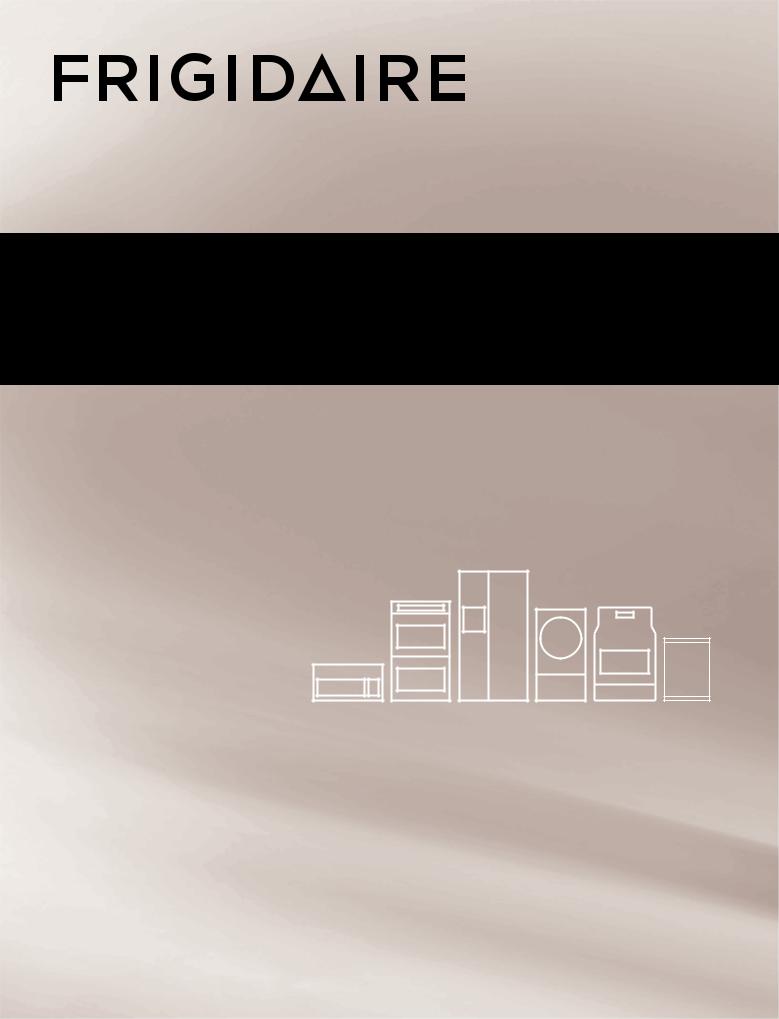
All about the
Use&Care
of your Electric Range with Induction Cooktop
|
TABLE OF CONTENTS |
|
|
Product Record and Registration . . . . . . . |
. . . . . . . 2 |
Setting Oven Controls . . . . . . . . . . . . . . . . . . . . . . |
20 |
Important Safety Instructions . . . . . . . . . . |
. . . . . . . 3 |
Care and Cleaning . . . . . . . . . . . . . . . . . . . . . . . . |
32 |
Cooking Recommendations . . . . . . . . . . . . |
. . . . . . 9 |
Before You Call . . . . . . . . . . . . . . . . . . . . . . . . . . . |
38 |
Before Setting Surface Controls . . . . . . . . . |
. . . . . 12 |
Warranty . . . . . . . . . . . . . . . . . . . . . . . . . . . . . . . . |
42 |
Setting Surface Controls . . . . . . . . . . . . . . . |
. . . . . 16 |
|
|
Before Setting Oven Controls . . . . . . . . . . . |
. . . . . 19 |
|
|
2018) (April H Rev A11103101
www.frigidaire.com USA 1-800-944-9044 |
www.frigidaire.ca Canada 1-800-265-8352 |
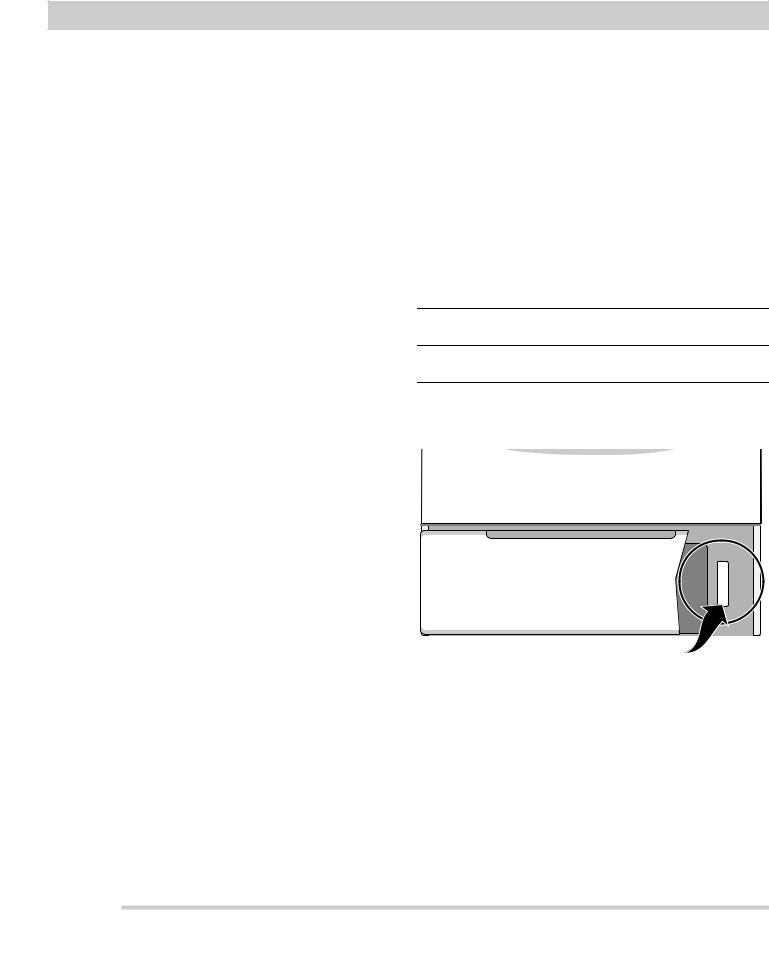
PRODUCT RECORD AND REGISTRATION
Product Registration . . . . . . . . . . . . . . . . . . . . . . . . . .2
Product Record and Registration . . . . . . . . . . . . . . . . . 2
Need Help? . . . . . . . . . . . . . . . . . . . . . . . . . . . . . . . . .2
Important Safety Instructions . . . . . . . . . . . . . . . . . . . . 3
Cooking Recommendations . . . . . . . . . . . . . . . . . . . . . 9
Before Setting Surface Controls . . . . . . . . . . . . . . . . . 12
Setting Surface Controls . . . . . . . . . . . . . . . . . . . . . . . 16
Before Setting Oven Controls . . . . . . . . . . . . . . . . . . 19
Setting Oven Controls . . . . . . . . . . . . . . . . . . . . . . . . . 20
Care and Cleaning . . . . . . . . . . . . . . . . . . . . . . . . . . . . 32
Oven Baking . . . . . . . . . . . . . . . . . . . . . . . . . . . . . . .38
Before You Call. . . . . . . . . . . . . . . . . . . . . . . . . . . . . . . 38
Warranty . . . . . . . . . . . . . . . . . . . . . . . . . . . . . . . . . . . . 42
Questions?
For toll-free telephone support in the U.S. and Canada call
1-800-944-9044.
For online support and Internet production information visit http://www.frigidaire.com.
Product Registration
Registering your product with Frigidaire enhances our ability to serve you. You can register online at http://www.frigidaire.com or by dropping your Product Registration Card in the mail.
Thank you for choosing Frigidaire.
Important: This Use and Care Guide is part of our commitment to customer satisfaction and product quality throughout the service life of your new appliance. We view your purchase as the beginning of a relationship. To ensure our ability to continue serving you, please use this page to record important product information.
Need Help?
Visit the Frigidaire web site at www.frigidaire.com
Before you call for service, there are a few things you can do to help us serve you better.
Read this Use & Care Manual
This manual contains instructions to help you use and maintain your range properly.
If You Received a Damaged Range...
Immediately contact the dealer (or builder) that sold you the range.
Save Time and Money
Check the section title “Before You Call”. This section helps step you through some common problems that might occur.
If you do need service, help is only a phone call away. Call Frigidaire Customer Services at 1-800-944-9044.
Record model & serial numbers here
Purchase Date
Frigidaire model number
Frigidaire serial number
Serial Plate Location
Serial plate location: open lower oven drawer (some models) or storage drawer (some models).
2 |
2017 Electrolux Home Products, Inc. |
All rights reserved. Printed in the USA |
|
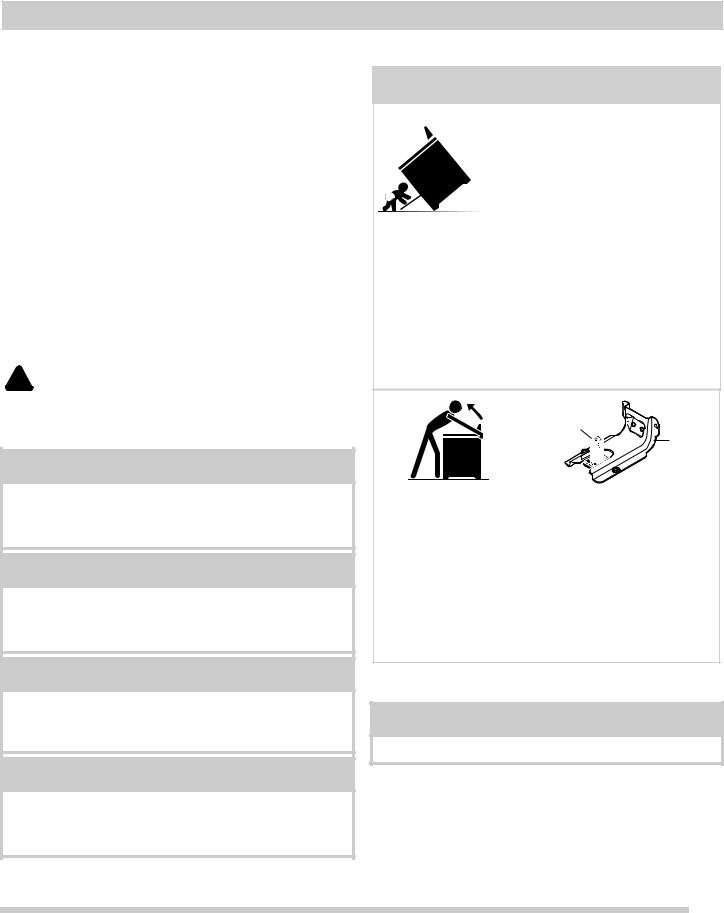
IMPORTANT SAFETY INSTRUCTIONS
Read all instructions before using this appliance.
This manual contains important safety symbols and instructions. Please pay attention to these symbols and follow all instructions given.
Do not attempt to install or operate your appliance until you have read the safety precautions in this manual. Safety items throughout this manual are labeled with a WARNING or CAUTION statement based on the risk type.
Warnings and important instructions appearing in this guide are not meant to cover all possible conditions and situations that may occur. Common sense, caution, and care must be exercised with installing, maintaining, or operating your appliance.
DEFINITIONS

 This is the safety alert symbol. It is used to alert you to potential personal injury hazards. Obey all safety messages that follow this symbol to avoid possible injury or death.
This is the safety alert symbol. It is used to alert you to potential personal injury hazards. Obey all safety messages that follow this symbol to avoid possible injury or death.
 WARNING
WARNING
Indicates a potentially hazardous situation which, if not avoided, may result in death or serious injury.
 CAUTION
CAUTION
Indicates a potentially hazardous situation which, if not avoided, may result in minor or moderate injury.
 IMPORTANT
IMPORTANT
Indicates installation, operation, maintenance, or valuable information that is not hazard related.
 NOTE
NOTE
Indicates a short, informal reference – something written down to assist the memory or for future reference.
 WARNING
WARNING
Tip Over Hazard
• A child or adult can tip the range and be killed.
• Verify the anti-tip device
has been installed to floor or wall.
• Ensure the anti-tip device is re-engaged to floor or wall when the range is moved.
•Do not operate the range without the anti-tip device in place and engaged.
•Failure to follow these instructions can result in death or serious burns to children and adults.
Range |
|
|
leveling |
Anti-tip |
|
leg |
||
bracket |
||
|
To check if the anti-tip bracket is installed properly, use both arms to grasp the rear edge of the range back. Carefully attempt to tilt range forward. When properly installed, the range should not tilt forward.
Refer to the anti-tip bracket installation instructions supplied with your range for proper installation.
 IMPORTANT
IMPORTANT
Save these instructions for future reference.
3

IMPORTANT SAFETY INSTRUCTIONS
IMPORTANT INSTRUCTIONS FOR
UNPACKING AND INSTALLATION
IMPORTANT - Read and follow the below instructions and precautions for unpacking, installing, and servicing your appliance:
Remove all tape and packaging before using the appliance. Destroy the carton and plastic bags after unpacking the appliance. Never allow children to play with packaging material. Do not remove the wiring label and other literature attached to the appliance. Do not remove model/ serial number plate.
Cold temperatures can damage the electronic control. When using this appliance for the first time, or when the appliance has not been used for an extended period of time, be sure the appliance has been in temperatures above 32ºF (0ºC) for at least 3 hours before turning on the power to the appliance.
Never modify or alter the construction of the appliance by removing the leveling legs, panels, wire covers, anti-tip brackets/screws, or any other part of the appliance.
Be sure to have an appropriate foam-type fire extinguisher available, visible, and easily accessible located near the appliance.
GROUNDING INSTRUCTIONS
 WARNING
WARNING
Avoid fire hazard or electrical shock. Failure to follow this warning may cause serious injury, fire, or death.
Avoid fire hazard or electrical shock. Do not use an adapter plug, use an extension cord, or remove grounding prong from the power cord.
Failure to follow this warning may cause serious injury, fire, or death.
Proper Installation—Be sure your appliance is properly installed and grounded by a qualified technician. In the United States, install in accordance with the National Fuel Gas Code ANSI Z223.1/NPFA No. 54, latest edition and National
Electrical Code NFPA No. 70 latest edition, and local electrical code requirements. In Canada, install in accordance with CAN/CGA B149.1 and
CAN/CGA B149.2 and CSA Standard C22.1,
Canadian Electrical code, Part 1-latest editions and local electrical code requirements. Install only per installation instructions provided in the literature package for this appliance.
For personal safety, this appliance must be properly grounded. For maximum safety, the power cord must be securely connected to an electrical outlet or junction box that is the correct voltage, is correctly polarized and properly grounded, and protected by a circuit breaker in accordance with local codes.
It is the personal responsibility of the consumer to have the appropriate outlet or junction box with the correct, properly grounded wall receptacle installed by a qualified electrician. It is the responsibility and obligation of the consumer to contact a qualified installer to assure that the electrical installation is adequate and is in conformance with all local codes and ordinances.
See the installation instructions packaged with this appliance for complete installation and grounding instructions.
Save these instructions for future use.
4

IMPORTANT SAFETY INSTRUCTIONS
IMPORTANT INSTRUCTIONS FOR USING THE APPLIANCE
 WARNING
WARNING
Storage In or On Appliance—Flammable materials should not be stored in an oven or microwave, near surface burners or elements, or in the storage or warmer drawer (if equipped). This includes paper, plastic, and cloth items, such as cookbooks, plastic ware, and towels, as well as flammable liquids. Do not store explosives, such as aerosol cans, on or near the appliance.
Do not leave children alone - Children should not be left alone or unattended in the area where appliance is in use. They should never be allowed to sit or stand on any part of the appliance, including the storage drawer, lower broiler drawer, warmer drawer, or lower double oven.
Do not store items of interest to children in the cabinets above the appliance or on the backguards of ranges. Children climbing on or near the appliance to reach items could be seriously injured.
WARNING
Do not allow children to climb or play around the appliance. The weight of a child on an open over door may cause the appliance to tip, resulting in serious burns or other injury. An open drawer when hot may cause burns.
Stepping, leaning, or sitting on the door or drawers of this appliance can result in serious injuries and also cause damage to the appliance.
Never cover any slots, holes or passages in the oven bottom or cover and entire rack with materials such as aluminum foil. Doing so blocks air flow through the oven and may cause carbon monoxide poisoning. Aluminum foil linings may also trap heat, causing a fire hazard.
Do not use oven or warmer drawer (if equipped) for storage.
Never use your appliance as a space heater to heat or warm the room. Doing so may result in carbon monoxide poisoning and overheating of the appliance.
 CAUTION
CAUTION
When heating fat or grease, watch it closely. Grease may catch fire if it becomes too hot.
Do not use water or flour on grease fires.
Smother fire or flame or use dry chemical or foam-type extinguisher. Cover the fire with a pan lid or use baking soda.
Use dry potholders. Moist or damp potholders on hot surfaces may result in burns from steam.
Do not let potholders touch hot cooking areas.
Do not use towels or other bulky cloths.
Do not heat unopened food containers - Buildup of pressure may cause container to burst and result in injury.
Save these instructions for future use.
5

IMPORTANT SAFETY INSTRUCTIONS
 CAUTION
CAUTION
Wear proper apparel - Loose-fitting or hanging garments should never be worn while using the appliance. Do not let clothing or other flammable materials contact hot surfaces.
Do not touch surface burners or elements, areas near these burners or elements, interior surfaces of the oven, or the warmer drawer (if equipped). Surface burners and elements may be hot even though they appear cool. Areas near surface burners and elements may become hot enough to cause burns. During and after use, do not touch, or let clothing or other flammable materials touch these areas until they are cool. These areas may include the cooktop, surfaces facing the cooktop, oven vent areas, oven door, and oven window.
Do not attempt to operate the appliance during a power failure. If the power fails, always turn off the appliance. If the appliance is not turned off and the power resumes, electric surface elements may resume operation when power is restored. Once the power resumes, reset the clock and the oven function.
IMPORTANT INSTRUCTIONS FOR USING YOUR INDUCTION COOKTOP
 CAUTION
CAUTION
Persons with a pacemaker or similar medical device should exercise caution using or standing near an induction unit while it is in operation, as the electromagnetic field may affect the working of the pacemaker or similar medical device. It would be advisable to consult your doctor or the pacemaker or similar medical device manufacturer about your particular situation.
Know which knob or key controls each surface heating area. Place cookware with food on the cooking area before turning it on. Turn the cooking area off before removing the cookware.
Cookware handles should be turned inward and not extend over adjacent surface elements. — To reduce the risk of burns, ignition of flammable materials, and spillage due to unintentional contact with the utensil, the handle of the cookware should be positioned so that it is turned inward, and does not extend over other cooking areas.
Glazed cooking utensils — Only certain types of cookware are suitable for cook top service and must be magnetic to work properly on the induction zones. Check the manufacturer’s recommendations for cook top use to ensure that the cookware is compatible with induction cooking.
Improper cookware may break due to sudden changes in temperature. Check the cookware manufacturer’s recommendations for cooktop use.
Use proper pan size - This appliance is equipped with one or more surface units of different sizes. Select cookware with flat bottoms that match the surface unit size. Using the proper cookware on the cooking area will improve efficiency.
Never leave surface elements unattended. Boilovers may cause smoking and greasy spills that may ignite. A pan that has boiled dry could be damaged and may damage the cooktop.
When you are flaming foods under a ventilating hood, turn on the fan.
Save these instructions for future use.
6

IMPORTANT SAFETY INSTRUCTIONS
IMPORTANT INSTRUCTIONS FOR GLASS AND CERAMIC COOKTOPS
Do Not Clean or Operate a Broken Cooktop. If cooktop should break, cleaning solutions and spillovers may penetrate the broken cooktop and create a risk of electric shock. Contact a qualified technician immediately.
Clean cooktop glass with caution. If a wet sponge or cloth is used to wipe spills on a hot cooking area, be careful to avoid a steam burn. Some cleaners can produce harmful fumes if applied to a hot surface.
Avoid scratching the cooktop glass with sharp objects.
IMPORTANT INSTRUCTIONS FOR USING YOUR OVEN
Protective liners—Do not use aluminum foil, aftermarket oven liners, or any other materials or devices to line oven bottom, oven racks, or any other part of the appliance. Only use aluminum as recommended for baking, such as lining cookware or as a cover placed on food. Any other use of protective liners or aluminum foil may result in a risk of electric shock or fire or a short circuit.
Use care when opening oven door, lower oven door, or warmer drawer (some models). Stand to the side of the appliance when opening the door of a hot oven. Let hot air or steam escape before you remove or replace food in the oven.
Keep oven vent ducts unobstructed. Touching surfaces in this area when the oven is on may cause severe burns. Do not place plastic or heatsensitive items on or near the oven vent. These items can melt or ignite.
Placement of oven racks - Always place oven racks in desired location while oven is cool. If rack must be moved while oven is hot, do not let potholder contact hot burner or element in oven. Use potholders and grasp the rack with both hands to reposition. Remove all cookware and utensils before moving the rack.
Do not use a broiler pan without its insert. Broiler pans and inserts allow dripping fat to drain away from the high heat of the broiler. Do not cover the broiler insert with aluminum foil; exposed fat and grease could ignite.
Do not cook food on the oven bottom. Always cook in proper cookware and always use the oven racks.
IMPORTANT INSTRUCTIONS FOR CLEANING YOUR APPLIANCE
 CAUTION
CAUTION
Before manually cleaning any part of the appliance, be sure all controls are turned off and the appliance is cool. Cleaning a hot appliance can cause burns.
Clean the appliance regularly to keep all parts free of grease that could catch fire. Do not allow grease to accumulate. Greasy deposits in the fan could catch fire.
Always follow the manufacturer’s recommended directions for use of kitchen cleaners and aerosols. Be aware that excess residue from cleaners and aerosols may ignite causing damage and injury.
Clean ventilating hoods frequently - Grease should not be allowed to accumulate on hood or filter. Follow the manufacturer’s instructions for cleaning vent hoods.
Save these instructions for future use.
7

IMPORTANT SAFETY INSTRUCTIONS
IMPORTANT INSTRUCTIONS FOR SELF CLEANING OVENS
Do not clean the oven door gasket. The door gasket is essential for a good seal. Care should be taken not to rub, damage, or move the gasket.
Do not use oven cleaners. No commercial oven cleaner or oven liner protective coating of any kind should be used in or around any part of the appliance.
Use the self clean cycle to clean only the parts listed in this manual.
Before using self clean, remove the broiler pan, any food, utensils, and cookware from the oven, storage drawer or warming drawer (if equipped). Remove oven racks unless otherwise instructed.
Some birds are extremely sensitive to the fumes given off during the self clean cycle of any oven. Move birds to another well-ventilated room.
IMPORTANT INSTRUCTIONS FOR SERVICE AND MAINTENANCE
Do not repair or replace any part of the appliance unless specifically recommended in the manuals. All other servicing should be done only by a qualified technician. This reduces the risk of personal injury and damage to the appliance.
Always contact your dealer, distributor, service agent, or manufacturer about problems or conditions you do not understand.
Ask your dealer to recommend a qualified technician and an authorized repair service. Know how to disconnect the power to the appliance at the circuit breaker or fuse box in case of an emergency.
Remove the oven door from any unused oven if it is to be stored or discarded.
Do not touch a hot oven light bulb with a damp cloth. Doing so could cause the bulb to break.
Handle halogen lights (if equipped) with paper towels or soft gloves. Disconnect the appliance or shut off the power to the appliance before removing and replacing the bulb.
Important Safety Notice - The California Safe Drinking Water and Toxic Enforcement Act requires the governor of California to publish a list of substances known to cause cancer, birth defects, or other reproductive harms, and requires businesses to warn customers of potential exposures to such substances.
Important: This appliance has been tested and found to comply with the limits for a class B digital device, pursuant to Part 18 of the FCC rules (United States) and ICES-001 (Canada). These limits are designed to provide reasonable protection against harmful interference in a residential installation. This unit uses and can radiate radio frequency energy and, if not installed and used in accordance with the instructions, may cause harmful interference to radio communications. However there is no guarantee that interference will not occur in a particular installation. If this unit does cause harmful interference to radio or television reception, which can be determined by turning the unit off and on, the user is encouraged to try to correct the interference by one or more of the following measures:
•Reorient or relocate the receiving antennae.
•Increase distance between unit and receiver.
•Connect the unit into an outlet or a circuit different from that to which the receiver is connected.
Save these instructions for future use.
8
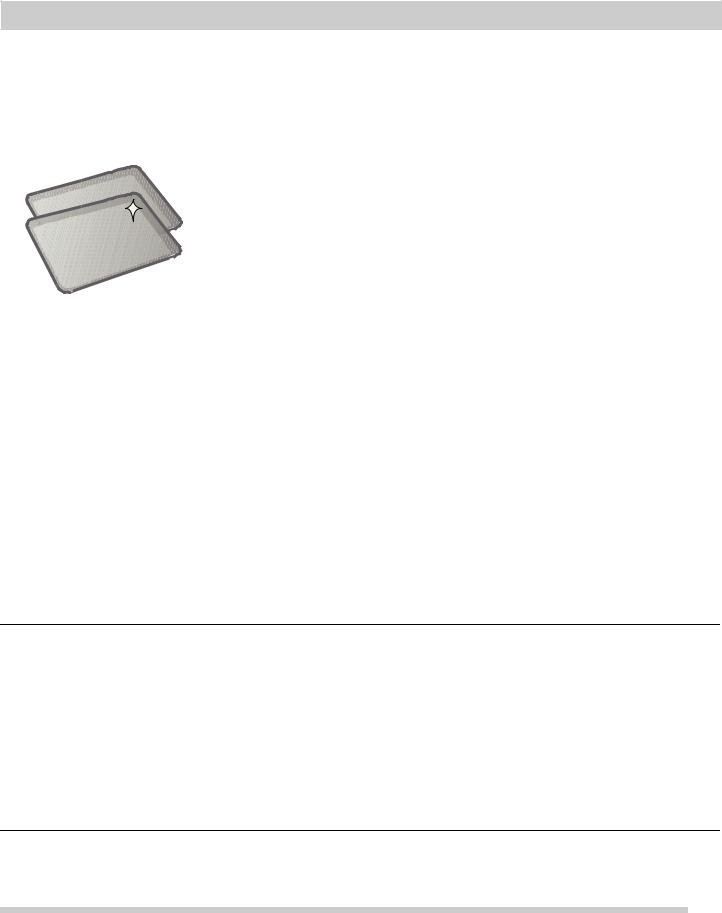
COOKING RECOMMENDATIONS
Bakeware
The material of bakeware affects how evenly and quickly it transfers heat from the pan to the food.
Material |
Attributes |
Recommendation |
|
|
|
Shiny metal bakeware |
Shiny, aluminum, and non-coated |
Recommended cooking temperatures and |
|
bakeware is the best for even heating. |
times are based on shiny metal bakeware. |
|
It is suitable for all baked goods. |
|
Dark metal bakeware |
Dark bakeware cooks hotter than shiny |
Reduce the cooking temperature by 25° F |
|
bakeware. |
(13-14° C) when using dark bakeware. |
Glass bakeware |
Glass bakeware cooks hotter than |
Reduce the cooking temperature by 25° F |
|
shiny bakeware. |
(13-14° C) when using glass bakeware. |
|
Glass is convenient, as the same piece |
|
|
of bakeware can be used for cooking, |
|
|
serving, and storing food. |
|
Insulated bakeware |
Insulated bakeware cooks cooler than |
|
shiny bakeware. |
|
Insulated bakeware is designed for |
|
baking in gas ovens. |
Increase the cooking temperature by 25° F (13-14° C) when using insulated bakeware.
9

COOKING RECOMMENDATIONS
Cooking Conditions: Conditions in your kitchen can affect the performance of your appliance when cooking food.
Condition |
Attributes |
Recommendation |
Aging cookware |
As pans age and become discolored, |
|
cooking times may need to be reduced |
|
slightly. |
If food is too dark or overcooked, use the minimum cook time in the recipe or packaging.
If food is too light or undercooked, use the middle to maximum cook time in the recipe or packaging.
High altitude |
Air is drier and air pressure is lower. |
|
Water boils at a lower temperature, and |
|
liquids evaporate faster. |
|
Foods may take longer to bake. |
|
Doughs may rise faster. |
Adjust cooking temperature, cooking time, or recipes as needed.
Increase amount of liquid in baking recipes.
Increase cook time on cooktop. Cover dishes to reduce evaporation.
Increase bake time or oven temperature.
Reduce amount of baking soda or baking powder in recipe. Reduce rising time or punch down dough and allow it to rise twice.
Cooking Results: Small adjustments may fix a problem with food not being as done as you like or more done than you like.
Result |
Recommendation |
Food too light |
Use the middle to maximum cook time recommended on packaging or recipe. |
Food too dark |
Use the minimum cook time recommended on packaging or recipe. |
Cooking Tips: Use these additional tips to get the best results from your appliance.
Cooking |
Tips |
|
|
|
Baking |
|
|
Rack placement |
Follow the instructions in “Oven Control Features” on starting on page 20. |
|
When using only one rack, place the rack so the food is in the center of the oven. |
|
|
Preheat |
Fully preheat the oven before baking items like cookies, cakes, biscuits and breads. Insert food |
|
immediately after the beep. |
|
|
Checking food |
Use the window and oven light when checking food. Opening the door may reduce baking perfor- |
|
mance. |
|
|
Bake or Quick |
Convection bake is the best function to use for baking on multiple racks. For best performance, see |
Bake |
“Setting Quick Bake” on page 24. |
|
|
Food placement |
Allow at least 2 inches (5 cm) of space between bakeware for proper air circulation. |
|
|
10

|
|
COOKING RECOMMENDATIONS |
|
|
|
|
|
|
Cooking |
Tips |
|
|
|
|
|
|
|
Broiling / Roasting |
|
|
|
|
|
|
Broiling pan |
For best results when broiling, use a broil pan with a broil pan insert designed to drain the fat from |
|
|
|
the food, help avoid spatter, and reduce smoking. The broiler pan will catch grease spills, and the |
|
|
|
insert helps prevent grease splatters. |
|
|
|
If a broiler pan and insert are not supplied with this appliance, they may be purchased from Frigid- |
|
|
|
aire.com. |
|
|
|
|
|
|
|
Convection Cooking |
|
|
|
|
|
|
Convection |
Convection cooking uses a fan to circulate hot air around the oven and food. It browns food more |
|
|
attributes |
evenly and reduces hot spots in the oven. |
|
|
Quick Bake |
Convection saves time when using multiple racks or cooking several food items at once. |
|
|
|
|
|
|
Convection bake |
Reduce cooking temperature by 25° F (13-14° C) from the recipe unless the recipe is written for |
|
|
Quick Bake |
convection baking. |
|
|
Preheat the oven for best results. |
|
|
|
|
|
|
|
|
|
|
11
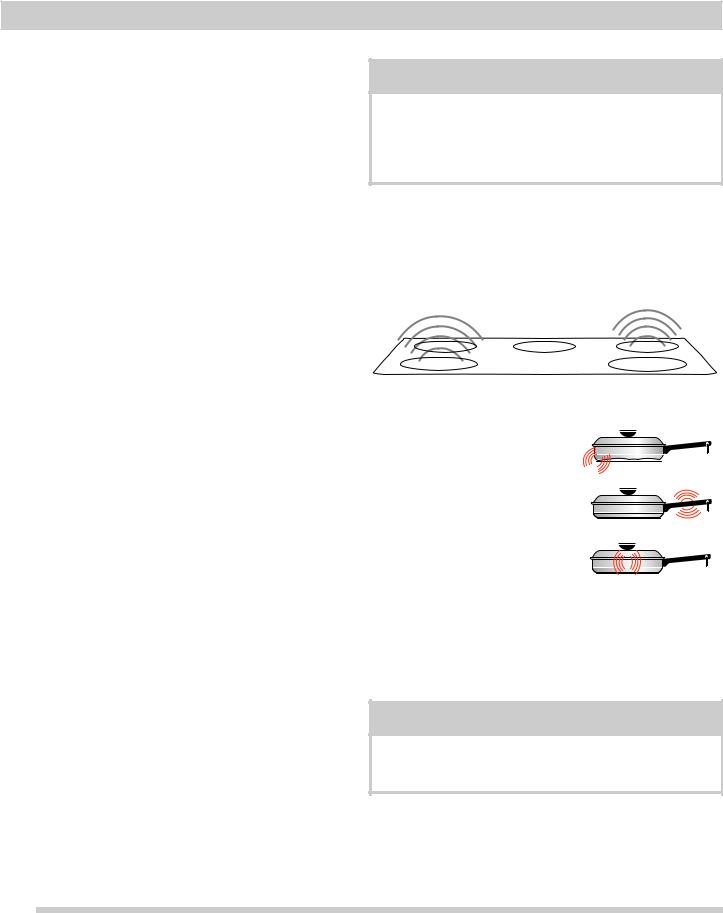
BEFORE SETTING SURFACE CONTROLS
What is Electromagnetic Induction?
Induction cooking uses electromagnets to create heat in compatible cookware.
Below each cooking zone on an induction cooktop, there is a copper coil. When the cooking zone is turned on, the electricity turns the coil into a type of magnet that heats metal cookware in the cooking zone.
Induction Features
Because heat starts in the cookware instead of the cooktop, induction offers several advantages.
Fast Heating: Cookware will heat up faster than on a conventional electric cooktop. Pay close attention to avoid scorching food when starting to cook. You may need to use a lower setting for cooking food than you are used to.
Precise Control: The heat going into the cookware will change immediately when you change the setting of the cooking zone.
Even Heating: Cookware will typically heat more evenly on an induction cooktop, so you are less likely to have hot or cool spots in the cookware.
Cooler Cooktop: An induction cooktop will be cooler when you remove the cookware than a conventional electric cooktop would be. Because the cooktop doesn’t get as hot, you are not as likely to get burned. Spills are also less likely to burn onto the surface, making clean-up easier.
Energy Efficiency: Induction cooking wastes less energy than a conventional cooktop, so it uses less electricity.
Preparation
Before using your cooktop for the first time, apply a ceramic cooktop cleaning cream (available in most hardware, grocery, and department stores) to the ceramic surface. Clean and buff with a clean paper towel. Cooktop cleaning creams leave a protective finish on the glass that will make cleaning easier when the cooktop is soiled from cooking and help prevent scratches and abrasions.
 CAUTION
CAUTION
Although induction cooking zones do not produce heat, they can become hot from contact with hot cookware. Burns may occur if a cooking zone or the surrounding area is touched before it has cooled to a safe temperature.
Sounds
The magnetic field over the induction cooking zone may cause cookware to vibrate, creating a buzzing or humming noise. These sounds are not unusual, especially at high settings.
Figure 1: Induction noise
• Cookware that is not perfectly flat on the bottom may vibrate slightly against the cooktop.
• A loose handle may vibrate in its socket.
•Multi-material cookware may
allow small vibrations in its structure.
Sounds are less likely to occur with heavier, higher quality cookware.
An induction cooktop may also produce faint clicking sounds from the electronic switches that maintain the desired cooking temperature.
 NOTE
NOTE
Be sure to read detailed instructions for induction cooktop cleaning in the “Care and Cleaning” section and “Before You Call” checklist section of this Use and Care Guide.
12
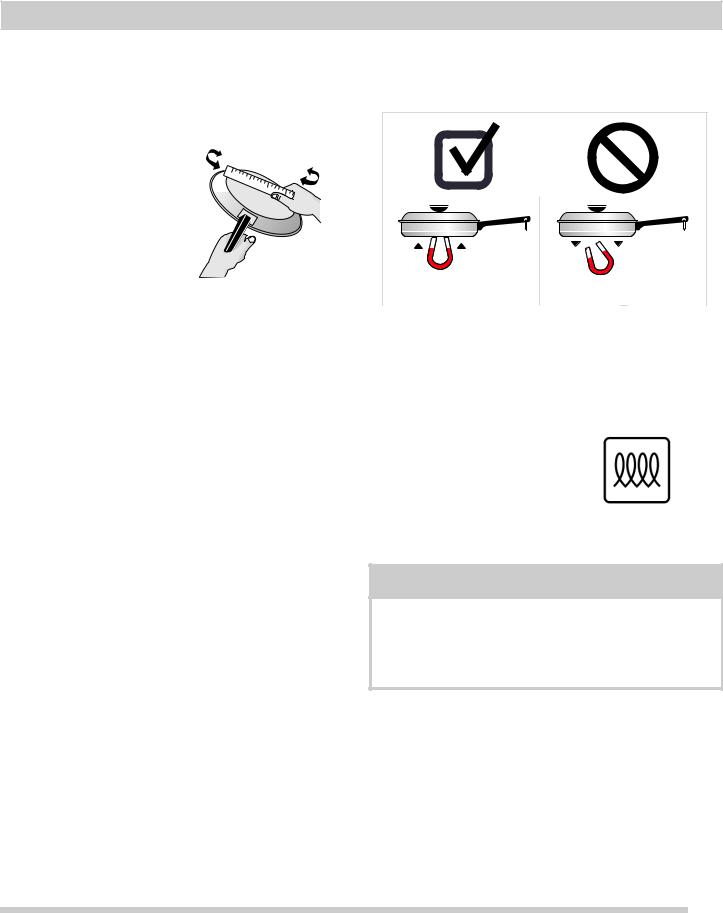
BEFORE SETTING SURFACE CONTROLS
Using Proper Cookware
The size and type of cookware used will influence the heat setting needed for best cooking results. Be sure to follow the recommendations for using proper cookware as illustrated in Figure 2 and Figure 3.
Check for flatness by rotating a ruler across the bottom of the cookware (see Figure 2). Cookware should have flat bottoms that make good contact with the entire surface of the cooking zone (see Figure 7 on page 14).
Figure 2: Ruler test
Cookware Selection
Cookware selection is especially important when using an induction cooktop. The cookware must contain magnetic iron or steel to work on an induction cooktop. Common materials for induction cookware include the following:
•Stainless Steel - Slow heat conductor with uneven cooking results. Durable, easy to clean, and resists staining. Some types of stainless steel will not work on an induction cooktop. Use the magnet test (Figure 3) to check stainless steel cookware.
•Cast Iron - A slow heat conductor that retains heat very well. Cooks evenly once cooking temperature is reached.
•Porcelain-enamel on metal - Heating characteristics will vary depending on base material. Porcelain-enamel on a compatible metal will work on an induction cooktop. Use the magnet test (Figure 3) to check porcelain-enamel cookware.
The Magnet Test
To see if a piece of cookware will work on your induction cooktop, try to stick a magnet to it (see Figure 3).
Magnet |
Magnet |
Sticks |
Falls |
• Cookware base material has |
• Cookware base material is |
good magnetic characteristics. |
non-magnetic. |
Figure 3: Magnet test
If the magnet clings firmly to the bottom of the cookware, it will work on your induction cooktop. If the magnet clings weakly or not at all, the cookware will not heat up on your induction cooktop.
Cookware sold as induction-ready will often have a symbol printed on the bottom by the manufacturer.
Figure 4: Induction symbol
 CAUTION
CAUTION
Proper cookware on an operating induction cooking zone will heat up very quickly. If an empty piece of cookware is left on an operating induction cooking zone, the rapid change in temperature may warp or damage the cookware.
13
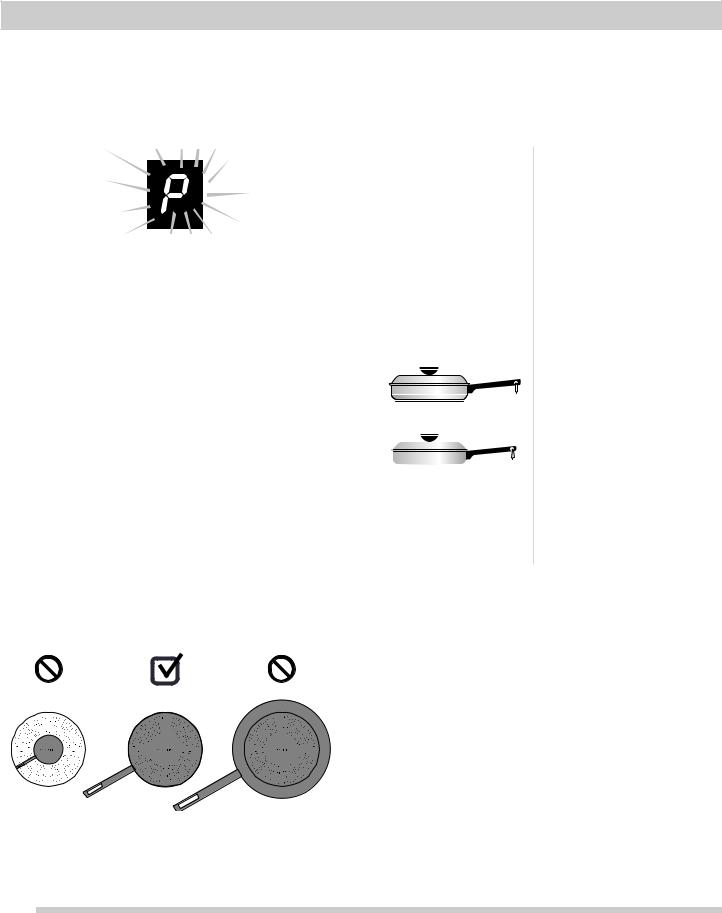
BEFORE SETTING SURFACE CONTROLS
Pan Sensing
Sensors beneath the cooktop surface require that certain cookware conditions be met before an induction cooking zone will operate. If a cooking zone is turned on and no cookware is detected, the zone display showing the power setting will flash (Figure 5).
Figure 5: Flashing error message
The conditions that generate a flashing message are illustrated in Figure 7. If the situation is not corrected, the cooking zone will automatically turn off after three minutes. It’s a good idea to lower the power setting before correcting the pan sensing message.
Minimum and Maximum Pan Size
The cooktop graphics are guides to minimum and maximum pan size for each cooking zone.
Induction cooking zones require a minimum pan size in order to activate. The inner ring on each cooking zone indicates the smallest pan size (Figure 6). If a suitable piece of cookware is centered properly but is too small, the display will flash and the pan will not heat. Select a larger pan or use a different cooking zone.
The outer ring on the cooktop graphic indicates the recommended maximum pan size for that zone (Figure 6). Do not use pans with bottoms that extend beyond the outer circle for a cooking zone. The cookware must make full contact with the ceramic glass surface. Cookware should not rest on or touch the metal edges of the cooktop.
Magnet
Sticks
•Cookware base material has good magnetic characteristics.
•Cookware centered correctly on cooking zone.
•Flat pan bottom and straight sides.
•Pan rests completely and is level on the cooktop surface.
•Pan is properly balanced.
Magnet
Falls
•Cookware base material is non-magnetic.
•Cookware not centered on cooking zone.
•Curved or warped pan bottoms or sides.
•Pan bottom rests on cooktop edge.
•Heavy handle tilts pan.
Figure 7: Pan sensing conditions
pan too small |
pan just right |
pan too big |
Figure 6: Pan sizes
14
